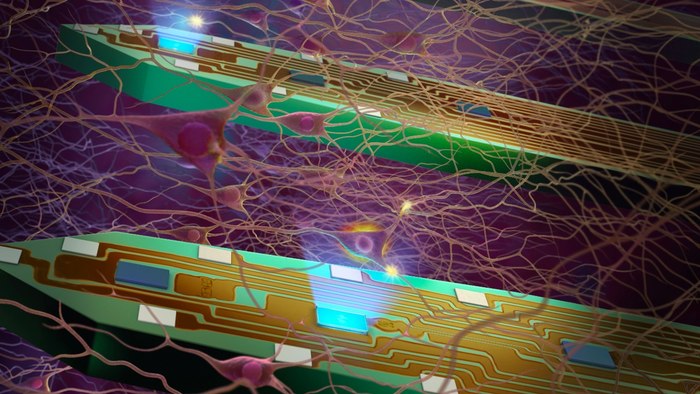
In the field of optogenetics, implanted optical fibers are used to stimulate brain cells by exposing them to pulses of light, while a second device records how they react. According to the U Michigan scientists, however, such a setup can't record the manner in which neurons communicate with one another – the new probes can reportedly do just that.
Each probe is less than a tenth of a millimeter wide, and contains 12 LEDs that are no larger than a neuron's cell body, along with 32 electrodes. Any one LED can activate a single neuron. When it does so, the electrodes are able to detect any responses from other neurons in the surrounding network.
The technology has already been tested on mice at New York University, in a study on how the animals form memories.
"Now we can know how a group of cells, both adjacent and farther away, are responding to the activation of a single cell," says UM postdoctoral researcher Fan Wu. "This will help us better understand how these cells are communicating with each other."
A paper on the probes was published this month in the journal Neuron. Scientists at the University of Illinois and Washington University have previously developed their own neuron-activating LED probes, although they don't also contain electrodes for measuring responses.

 Previous page
Previous page Back to top
Back to top







